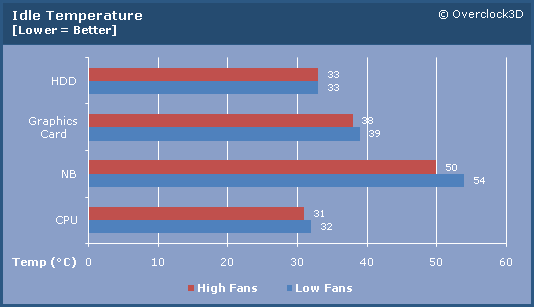CM Storm Sniper
Test Setup
For testing we went for a fairly high-end system, one that most gamers would consider adequate. Here is the full spec:
Cooler Master Z600 CPU cooler,
4GB Crucial Ballistix @ 667MHz 1:1,
ATI Radeon HD4830,
Dual Raptor X RAID 0,
250GB Seagate Media Drive,
730w Hiper Type-R PSU,
LG DVD-RW Drive.
As you can see, we applied a fairly large overclock on the Q6600. The Z600 cooler had just one fan mounted on it, which was a quiet, low CFM model, so that the case was left to do most of the cooling legwork. Apart from that, all other component cooling was left at stock.
Testing
We tested with the fans set to the minimum and maximum that the onboard controller would let us use. For the idle tests, we booted into Windows and left it to idle for 20 minutes, before recording the temperature values from Everest. We then ran four instances of Prime95 to load up the CPU and an artifact scan on ATI Tool to stress the GPU. Each test was performed under Low and High speed fan environments, giving an indication as to how well the extra fan speed affects cooling. An average of all four cores was used, as this is more accurate than the ‘CPU’ temperature that Everest lists.
Results analysis
As you can see, the Sniper performed extremely well in all tests, keeping our test system well within its thermal limits. Interestingly, the extra fan speed didn’t have a massive effect on temperatures, lowering them by a degree or two at most. The only exception to this rule is our motherboard’s northbridge, which benefited massively from the extra airflow, but the X38 is a particularly hot northbridge. We’d therefore recommend that most users have the fans set to low, as they did become quite audible once running at full pelt.




